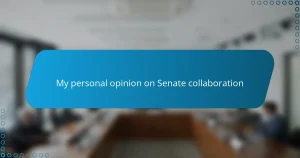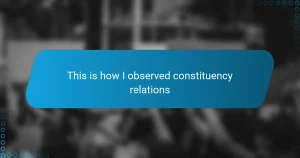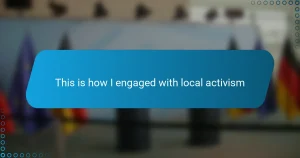Key takeaways
- Recognizing partisan media biases involves critical thinking about how stories are framed, emphasizing the need for active rather than passive consumption of news.
- Utilizing media bias rating sites and fact-checking tools helps identify and counter misinformation, enhancing awareness of differing perspectives.
- Engaging with diverse viewpoints and questioning emotional reactions fosters a more balanced understanding of media narratives.
- Learning patience and humility in media consumption allows for deeper insight and a healthier emotional response to news coverage.
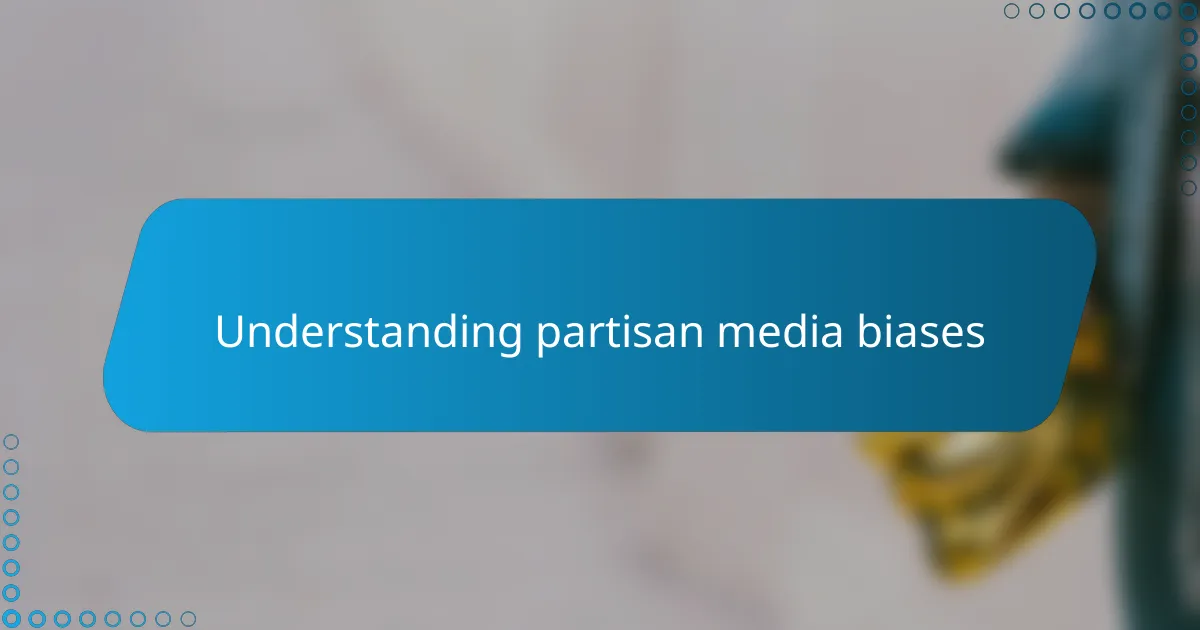
Understanding partisan media biases
Partisan media biases often slip past us unnoticed until we catch ourselves nodding too eagerly or bristling too sharply at certain stories. I remember once tuning into a news segment that confirmed exactly what I already believed, only to realize later it had left out critical perspectives that would have challenged me. Have you ever felt that uncomfortable moment when a piece of news seems more like opinion dressed up as fact?
What struck me most is how these biases don’t just shape the story but also the emotions that come with it—anger, fear, or even relief. It’s like the media is telling us what to feel as much as what to think. That made me pause and ask: am I consuming information to understand the world better, or just to reinforce my own views?
Understanding these biases means recognizing the subtle ways stories are framed—what’s emphasized, what’s skipped, and what language is used. From my experience, this awareness is the first step to breaking free from being a passive consumer. It turns the act of watching the news into an active exercise in critical thinking, rather than an unquestioning acceptance.
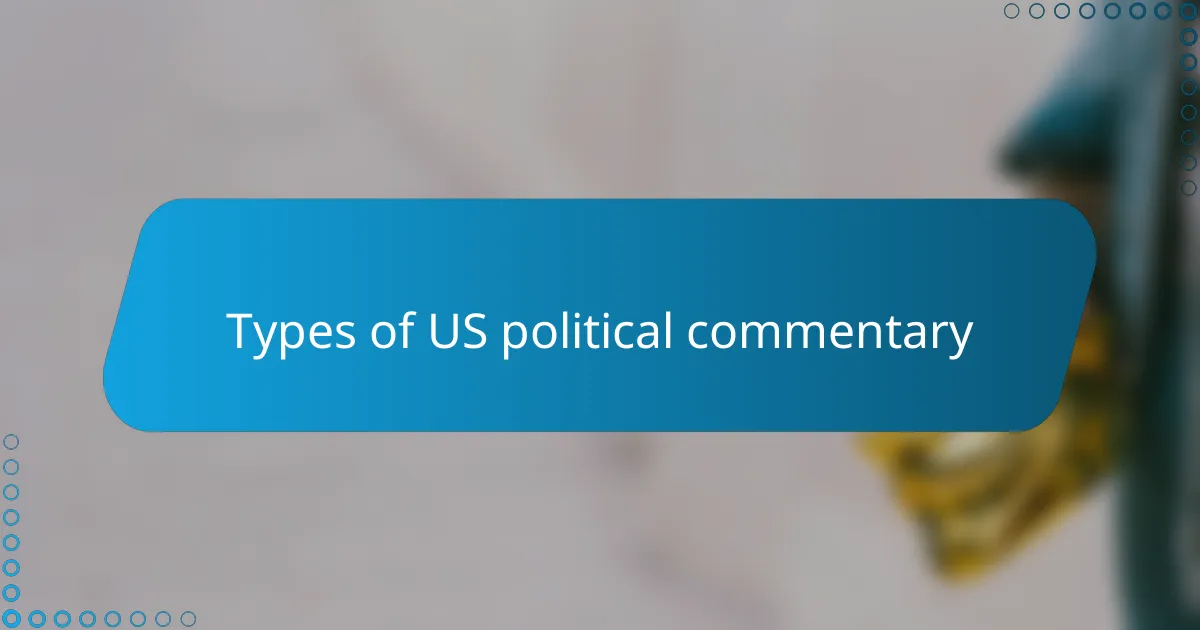
Types of US political commentary
When it comes to US political commentary, I’ve noticed it generally falls into a few distinctive types. There’s the straight news reporting that tries, at least on the surface, to stick to facts. Then there’s the opinion-driven commentary, where pundits and hosts openly share their views, often with a strong ideological bend. Have you ever caught yourself wondering why some commentators sound more like cheerleaders than analysts?
I remember tuning in to a panel discussion once, expecting a balanced debate, but it quickly became clear that each speaker was preaching to their base. This type of commentary often feels more about rallying support than dissecting issues, creating an echo chamber where opposing views get drowned out. It’s a reminder of how diverse—and divided—the landscape of political commentary really is.
There’s also investigative commentary, which I find particularly compelling because it digs beneath the surface. But even then, the angle can be influenced by the outlet’s leanings, shaping which stories get spotlighted. Navigating these layers can be tricky, prompting me to ask: How do we find commentary that challenges us, rather than just confirms our biases?
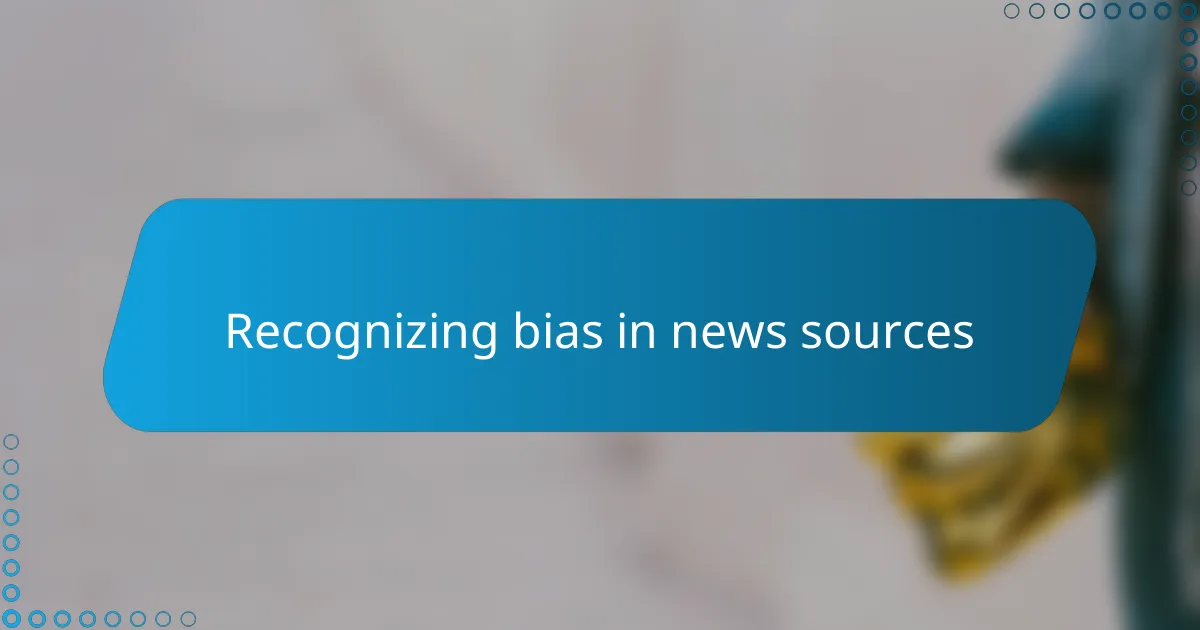
Recognizing bias in news sources
Recognizing bias in news sources isn’t always straightforward. I’ve often caught myself accepting a report at face value, only to later notice the absence of crucial facts that didn’t fit the outlet’s narrative. It made me wonder: what stories am I missing because they don’t align with what’s being pushed?
One trick I’ve found useful is paying attention to language—the words chosen and the tone. When coverage feels charged or overly dramatic, that’s usually a sign the story is being framed to provoke an emotional reaction rather than present a balanced view. Have you ever read a headline that seemed designed to make you angry or anxious before you even got to the details?
It’s also important to consider the source itself. Over time, I started keeping track of which outlets repeatedly lean left or right and how that influences their framing. This awareness helped me step back and ask: am I listening to facts, or am I being guided toward a particular opinion? Recognizing these patterns has made my media consumption much more intentional.
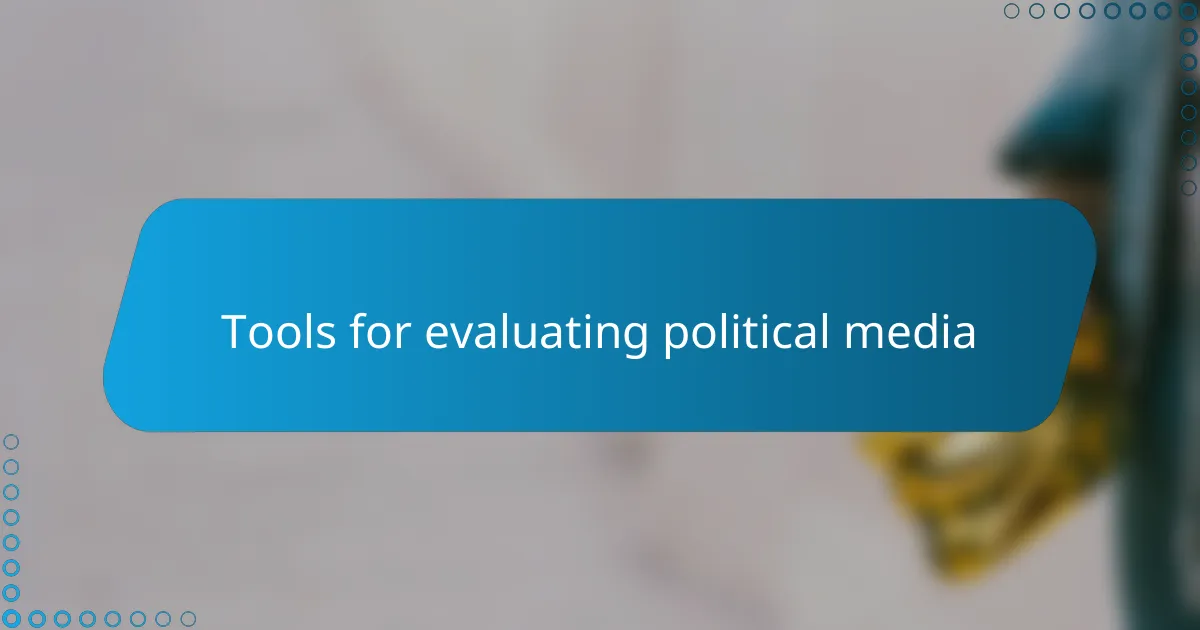
Tools for evaluating political media
One tool I’ve come to rely on is media bias rating sites. Early on, I discovered that checking how different platforms rank an outlet’s political leanings helped me catch blind spots I hadn’t noticed before. Have you ever been surprised to see a trusted source flagged for a strong bias? That realization pushed me to dig deeper rather than take things at face value.
Fact-checking websites have also been a game-changer for me. When a story feels loaded or too convenient, running it through these sites often reveals missing context or disputed claims. I remember one time I was ready to share a viral post, but a quick fact-check saved me from spreading misinformation—and that felt like winning a small battle against bias.
Then there’s the practice of cross-referencing multiple news sources. It takes a bit more time, but seeing how different outlets cover the same event exposes what’s emphasized or ignored. Have you tried comparing headlines side by side? For me, this habit opened my eyes to the subtle ways framing can push a narrative in one direction or another. It turned media consumption into an active investigation rather than passive intake.
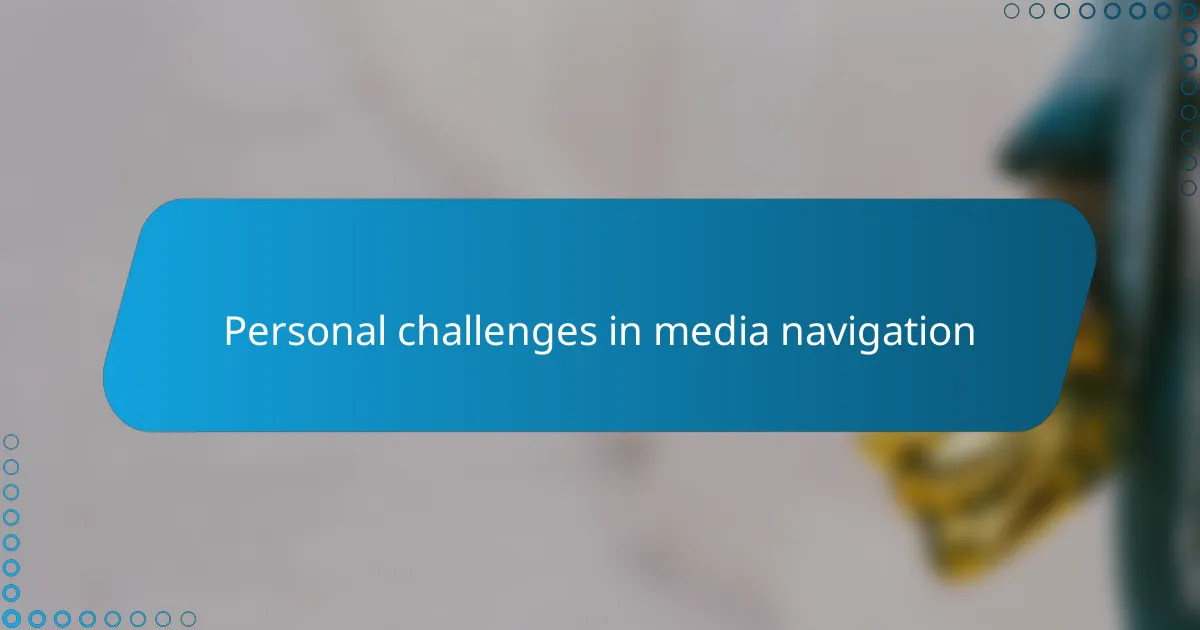
Personal challenges in media navigation
Navigating partisan media bias hasn’t been without its personal hurdles. I recall feeling overwhelmed by the sheer volume of conflicting narratives—each outlet claiming to hold the ultimate truth. It made me question my own judgment: how do I separate what’s credible from what’s crafted to manipulate?
Sometimes the hardest part has been resisting the comfort of echo chambers. I often caught myself gravitating toward sources that aligned perfectly with my views, even when a nagging voice told me I might be missing the bigger picture. Have you ever noticed that safer feeling of sticking to familiar angles, even when you want to be more open-minded?
Another challenge came with managing the emotional toll. Constant exposure to polarized commentary can stir frustration or helplessness. From my experience, learning to step back and recognize when my reactions were being shaped by media biases—not my own reason—was key to regaining control over my media diet.
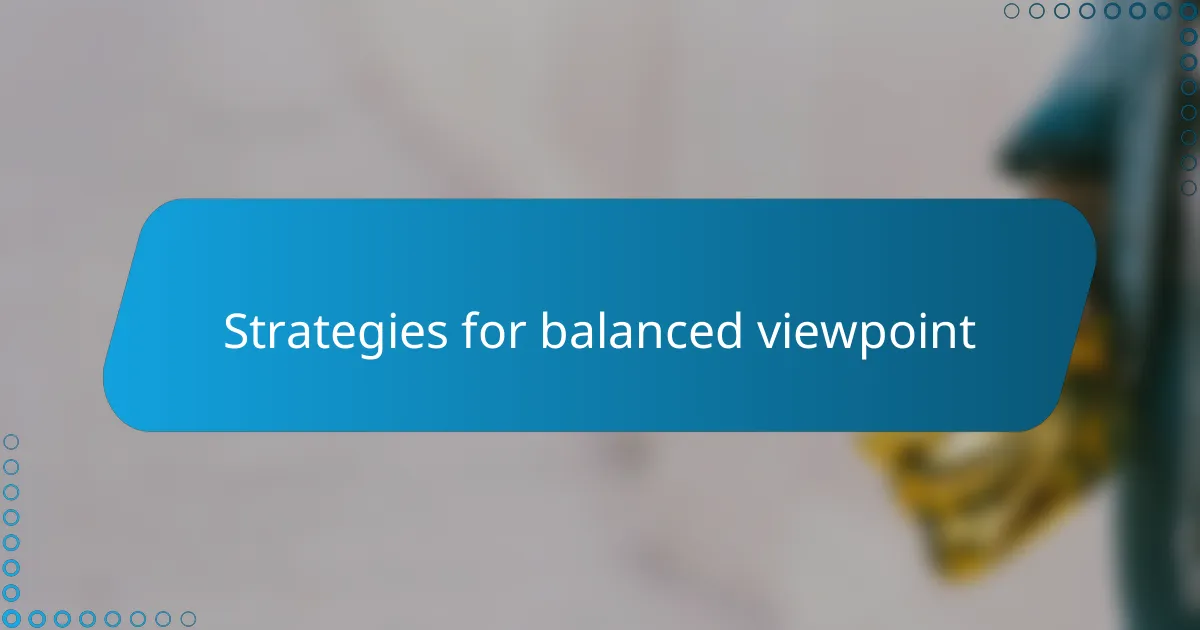
Strategies for balanced viewpoint
One strategy I’ve found vital is actively seeking out sources from across the political spectrum. It’s uncomfortable at first—like stepping into unfamiliar territory—but it forces me to confront viewpoints I might otherwise dismiss. Have you ever tried reading an article from a source you usually distrust and found yourself challenged in unexpected ways?
I also make it a point to question my immediate reactions. When a story sparks strong emotions, I pause and ask myself: is this feeling a sign of insight or just a reaction triggered by biased framing? This habit of slowing down helps me move beyond impulse to a more balanced understanding.
Finally, I turn to discussions with people holding different opinions. Early on, I shied away from these conversations, fearing conflict. Now, I see them as essential chances to test my assumptions and refine my thinking. How often do we really listen rather than wait for our turn to speak? Engaging openly has been one of the most transformative parts of navigating media bias for me.
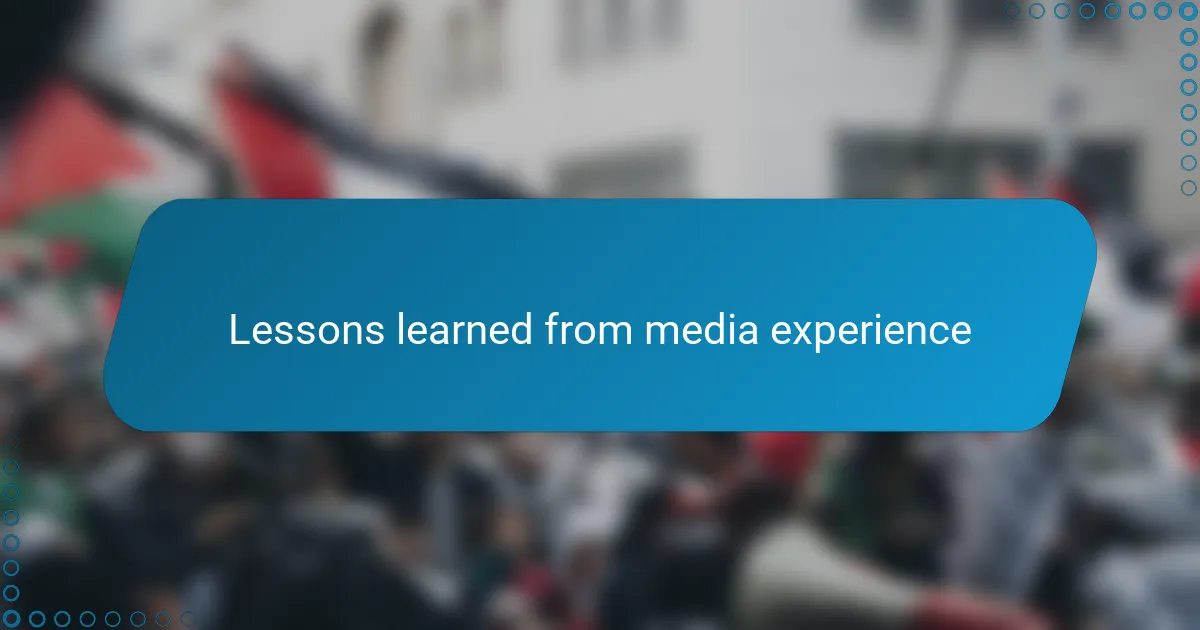
Lessons learned from media experience
One lesson that stands out for me is how vital patience is when engaging with partisan media. Rushing to conclusions based on initial headlines often led me down misleading paths. Have you ever caught yourself reacting immediately, only to realize later that you missed crucial context? Taking a step back before forming an opinion has made all the difference in avoiding knee-jerk judgments.
I also learned the importance of humility in my media journey. Accepting that I don’t have all the answers—and that my perspectives can be shaped unknowingly by bias—was surprisingly freeing. It opened me up to questioning sources I once trusted blindly, which wasn’t always comfortable but ultimately deepened my understanding.
Finally, the emotional impact of media can’t be underestimated. I noticed how repeated exposure to charged narratives sometimes drained my optimism. Recognizing when media consumption was affecting my mood helped me set clearer boundaries, turning a passive habit into a conscious choice that protects my mental space. Have you ever felt worn out simply by following the news? That awareness is, in itself, a powerful lesson.
